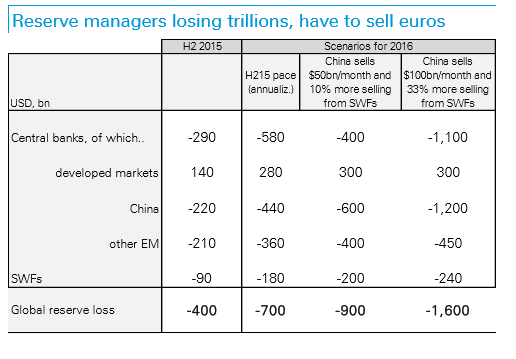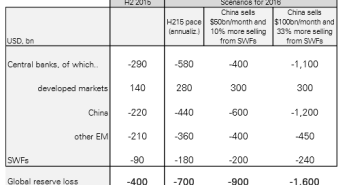EUR/USD is sliding form the highs but still keeps a distance of no less than 10 big figures from parity. Nevertheless, the team at Deutsche Bank sees a fall to parity and beyond:
Here is their view, courtesy of eFXnews:
Deutsche Bank remains committed to its bearish EUR/USD forecasts and looks for a move down to at least parity over 2016. Here are three reasons why.
1- ECB has more ammunition to ease. “The BoJ experience points to the constraints of additional easing, and yesterday we introduced two dimensions along which these constraints can be assessed: fixed income risk premia and banking sector profitability. On both metrics there seems to be scope for additional easing in Europe. The European GDP-weighted yield curve is steep compared to others and European banks’ share of fixed income assets is not as high as in Japan or the US. With a mix of weakening macro data, tightening financial conditions and stalling in the EUR downtrend, the ECB has all the required excuses to deliver an all-rounded easing package in March,” DB argues.
2- Reserve managers a big negative for the euro. “The ongoing decline in FX reserves doesn’t matter for the yen because central banks don’t own Japanese assets. In contrast, the euro is the world’s second major reserve currency and the drop in EM reserves requires ongoing EUR/USD selling to maintain constant relative FX allocations. Our best estimate of the drawdown in reserves over 2016 is 700bn-1.6trillion on an FXadjusted basis (chart 1), which assuming a 25% euro share is equivalent to 200-400n of euro selling,” DB adds.

3- Europe is not Japan When risk-aversion hits the JPY strengthens because the Japanese repatriate foreign assets. “Risk-off causes some euro short covering, but the key difference with Japan is that Europe’s international investment position is still negative. This means there are still more foreigners invested in European assets that Europeans offshore, reducing the positive flow impact on the EUR. Europe’s negative international investment position is a key component of our Euroglut hypothesis of persistent outflows, and the latest Eurozone data released last week show 500bn annualized outflows in the last quarter of last year, another record high,” DB notes.
For lots more FX trades from major banks, sign up to eFXplus
By signing up to eFXplus via the link above, you are directly supporting Forex Crunch.
